
The Theatre Royal, Exeter was the name of several theatres situated in the city centre of Exeter, Devon, England in the United Kingdom.

The Theatre Royal, Exeter was the name of several theatres situated in the city centre of Exeter, Devon, England in the United Kingdom.

The name "Theatre Royal" was first applied in Exeter by the mid-1830s to what had previously been the Bedford Circus Theatre, in premises dating from 1821. [1] This theatre building was a replacement for one of 1787 which had burnt down the previous year. [2]
This building was completely gutted by fire in 1885. [1] Although it was reconstructed for other purposes, the name "Theatre Royal" was transferred to new premises on the corner of Longbrook Street and New North Road. [3] The new theatre was built by the Exeter Theatre Company to the designs of C. J. Phipps and opened in 1886. [4]

The theatre is best remembered for the disaster during a dramatisation of Romany Rye (a melodrama by Wilson Barrett) on 5 September 1887, which became the worst theatre fire in British history. Fire broke out backstage where gas lighting ignited some gauze. The number of exits from the gallery of the auditorium proved to be inadequate and in the resultant panic amongst the audience 186 people died. [5] A national appeal for donations for the victims’ families raised £20,763 and the event was influential in the introduction of safety precautions for public buildings. [6] There is a memorial to those who died in the fire in Higher Cemetery, Heavitree, made by local sculptor Harry Hems. [7]
The Theatre Royal was rebuilt, opening in 1889 with a performance of The Yeomen of the Guard by the D'Oyly Carte Opera Company. [1] The new building had lighting by electricity and a safety curtain. [8]
During its lifetime the theatre presented melodrama, musical theatre, music hall and ballet as well as drama. Every Christmas of its 20th century existence saw a pantomime. For a period in the 1950s it showed CinemaScope films. [9]
The Theatre Royal was closed in 1962 and demolished to be replaced by an office block. Although attempts to save it were unsuccessful, they did lead to creation of the Northcott Theatre.
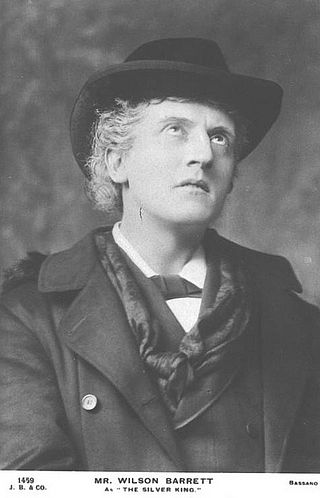
Wilson Barrett was an English manager, actor, and playwright. With his company, Barrett is credited with attracting the largest crowds of English theatregoers ever because of his success with melodrama, an instance being his production of The Silver King (1882) at the Princess's Theatre of London. The historical tragedy The Sign of the Cross (1895) was Barrett's most successful play, both in England and in the United States.

Ilfracombe is a seaside resort and civil parish on the North Devon coast, England, with a small harbour surrounded by cliffs.

The Northcott Theatre is a theatre situated on the Streatham Campus of the University of Exeter, Exeter, Devon, England. It opened in 1967 and was run until 2010 by the Northcott Theatre Foundation, when the company ceased operating after a period in administration. The theatre is now known as Exeter Northcott Theatre and became a registered charity in June 2013.

Eggesford railway station is a rural station in Devon, England, serving Eggesford, the town of Chulmleigh and surrounding villages. Despite its name, the station is in the neighbouring civil parish of Chawleigh. It is on the Tarka Line to Barnstaple, 22 miles 27 chains (35.9 km) from Exeter Central at milepost 193.75 from London Waterloo.
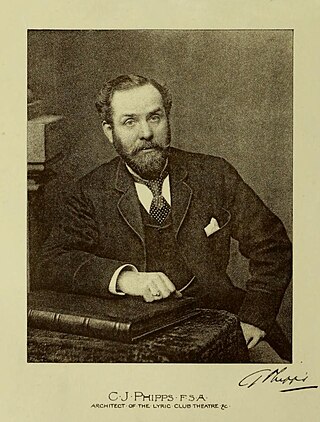
Charles John Phipps was an English architect known for more than 50 theatres he designed in the latter half of the 19th century, including several important ones in London. He is noted for his design of the Theatre Royal, Exeter, which caught fire in 1887, killing 186 visitors.

Theatre Royal, Plymouth, is a theatre venue in Plymouth, Devon. It consists of a 1,300-seat main auditorium, The Lyric, which regularly hosts large-scale musicals, opera and ballet; a 200-seat studio, The Drum; and a 50-seat studio, The Lab. On a separate site, Theatre Royal Plymouth also has a production and learning centre, TR2, featuring rehearsal studios and workshops for the production of set and costumes.

The Scala Theatre was a theatre in Charlotte Street, London, off Tottenham Court Road. The first theatre on the site opened in 1772; the last was demolished in 1969, after a catastrophic fire. From 1865 to 1882, the theatre was known as the Prince of Wales's Theatre.

The Princess's Theatre or Princess Theatre was a theatre in Oxford Street, London. The building opened in 1828 as the "Queen's Bazaar" and housed a diorama by Clarkson Stanfield and David Roberts. It was converted into a theatre and opened in 1836 as the Princess's Theatre, named for then Princess Victoria before her accession as queen. After an unsuccessful series of promenade concerts, alterations were made on the interior, and the theatre was reopened on 26 December 1842 with Vincenzo Bellini's opera La sonnambula. The theatre, by now under the management of John Medex Maddox, presented operas and other entertainments, such as General Tom Thumb.

The Britannia Theatre (1841–1900) was located at 115/117 High Street, Hoxton, London. The theatre was badly damaged by a fire in 1900, forcing the sale of the lease. The site was reused as a Gaumont cinema from 1913 to 1940, before being demolished to make room for a more modern cinema which was never built. Housing has now been built on the site, which is marked by a London Borough of Hackney historic plaque.

Thorverton is a civil parish and village in Devon, England, about a mile west of the River Exe and 8 miles (13 km) north of Exeter. It is almost centrally located between Exeter and the towns of Tiverton, Cullompton and Crediton, and contains the hamlets of Yellowford and Raddon. The parish is surrounded, clockwise from the north, by the parishes of Bickleigh, Rewe, Nether Exe, Brampford Speke, Upton Pyne, Shobrooke, Stockleigh Pomeroy and Cadbury. Most of the eastern boundary of the parish is formed by the River Exe and the land rises westwards to 800 feet (240 m) at the border with Cadbury.
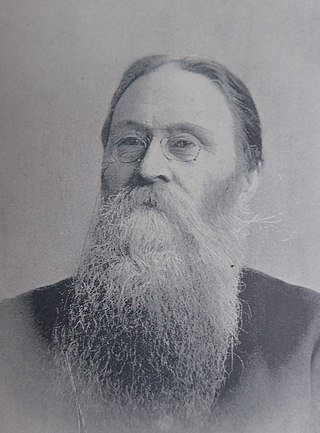
Alfred Darbyshire was a British architect.

Harry Hems was an English architectural and ecclesiastical sculptor who was particularly inspired by Gothic architecture and a practitioner of Gothic Revival. He founded and ran a large workshop in Exeter, Devon, which produced woodwork and sculpture for churches all over the country and abroad. He was also a philanthropist and an eager self-promoter. A large part of the collection of medieval woodwork that he accumulated during his working life is now in the Royal Albert Memorial Museum in Exeter.

Exeter is a cathedral city and the county town of Devon, South West England. It is situated on the River Exe, approximately 36 mi (58 km) northeast of Plymouth and 65 mi (105 km) southwest of Bristol.

The 48th Street Theatre was a Broadway theatre at 157 West 48th Street in Manhattan. It was built by longtime Broadway producer William A. Brady and designed by architect William Albert Swasey. The venue was also called the Equity 48th Street Theatre (1922–25) and the Windsor Theatre (1937–43).
The following is a timeline of the history of the city of Plymouth, Devon, England.
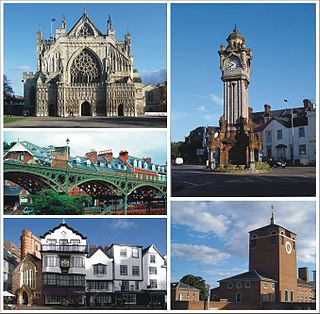
The following is a timeline of the history of the city of Exeter, Devon, England.

The Royal Clarence Hotel is a former hotel in Cathedral Yard, Exeter, Devon, England. It is often described as the first property in England to be called a hotel; however, The German Hotel, London, was described in this way in 1710, so it is probably the second. Since 2005 the 53-bedroom hotel was branded as ABode Exeter.
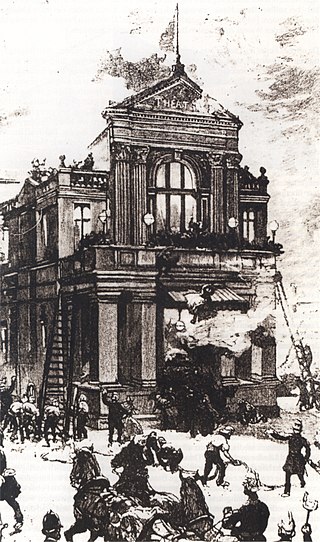
On 5 September 1887, a fire broke out in the backstage area of the Theatre Royal in Exeter, England, during the production of The Romany Rye. The fire caused panic throughout the theatre, with 186 people dying from a combination of the direct effects of smoke and flame, crushing and trampling, and trauma injuries from falling or jumping from the roof and balconies.

The Exeter City Fire Brigade was the first municipal fire brigade in Exeter, Devon, United Kingdom. The brigade was formed in 1888, on the recommendation of Captain Sir Eyre Shaw, the Chief Officer of the Metropolitan Fire Brigade, who conducted a parliamentary inquiry into the Exeter Theatre Royal fire during which 186 people died, making it still the worst-ever building fire death toll in the UK.

Robert Pople was a publican who was three times Mayor of Exeter, Devon.